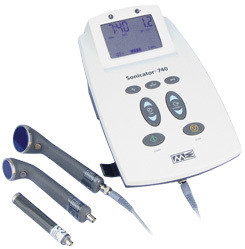 21st Sep 2018
21st Sep 2018
How to Use a Pain Scale & Create an Effective Treatment Plan
If you’re a practitioner working actively in rehabilitation you deal with patients in pain every day. Asking patients to describe their pain and level of discomfort is some of the first questions asked at each treatment session. One of the easiest and accessible tools practitioners use to help give patients a measurement for their pain is the 0-10 pain scale or the 11-point pain scale. We’ve talked about the pain scale previously, but this is a sample of the scale used in most rehabilitation practices.
What Is a Pain Measurement Scale?
In a nutshell, a pain scale is a way for patients to apply a number associated with the pain they’re feeling. Since everyone experiences pain differently, it’s important to have a quantifiable number assigned to a patient’s pain in order to address it during treatment. For example, a patient who experiences chronic pain, like those with Rheumatoid Arthritis who has chronic knee pain, may scale pain and it’s on their ability to perform daily tasks compared to someone who sustained an ankle sprain. The pain scale is a useful tool for use as part of an evaluation for both patients and throughout their treatment to assess progress.
What makes the pain scale so popular and universal is its ease of use. Most practices use the 0-10 pain scale as part of the written patient history using the numbered cartoon faces moving from 0 (happy and pain-free) to 10 (crying from pain). When using the scale, the patient will either fill out the form as part of their intake paperwork or during the evaluation when they are asked by their practitioner to match their level of pain with the corresponding figure/number on the above scale.
How to Use the Pain Scale Effectively
One of the main things to keep in mind is pain is subjective. Some patients may have a higher pain threshold than others. It’s important to remember that the pain scale is a tool, but to get the full picture of a patient’s pain, verbal communication and follow-up is needed on behalf of the practitioner to make sure they understand the patient’s context for their chosen score.
Once a practitioner understands the level of their patient’s pain, they can begin to formulate a game plan to begin to decrease it. Some of the other common types of adjectives patients may use to describe their pain are:
- Burning
- Tender
- Sharp
- Diffuse
- Radiating
- Annoying
There are many modalities used in rehabilitation that are effective pain relievers and provide an alternative form of pain relief for oral-pain medications, which in today’s opioid epidemic is useful on many levels.
Treating Different Types of Pain with Physical Therapy Modalities
1.Burning: Burning pain is often associated with nerve impingement. Because of this, it can sometimes correspond with reduced range of motion. When a patient describes their pain as burning: equipment like Cold-Compression Therapy devices are useful because it creates an almost immediate analgesic benefit from cold therapy combined with the compression therapy, which can help reduce any swelling that may impinge movement.
2.Tender: Tenderness is most often a complains for patients that suffer from chronic pain conditions like arthritis or fibromyalgia. Electrical stimulation is a beneficial modality to use to treat this type of pain, because it can interrupt the pain signal from being delivered to the brain. Another type of electrical stimulation which can improve this type of pain is transcutaneous electrical nerve stimulation (TENS) which can be used by the patients themselves at home, offering a non-invasive pain-relief alternative.
3.Sharp: A sharp pain usually occurs after an injury like a sprain or strain. Once the immediate injury has been treated with the R-I-C-E method, but the sharp pain remains, ultrasound therapy may be a good modality to utilize. When devising treatment using ultrasound therapy, practitioners can choose from 1 cm, 5 cm or 10 cm in order to use the soundhead applicator most appropriate to the treatment area. Additionally, practitioners can use continuous or pulsed modes depending on whether the treatment area is shallow or deep.
4.Radiating: Radiating pain can also be due to nerve impingement or an immediate injury. For radiating pain, cold therapy in the form of hot packs may be the most effective in reducing pain. However, contrast therapy with heat therapy combined with cold therapy (cold packs, whirlpool therapy, cold-compression therapy) may give the most relief.
5.Annoying: Annoying is the most specific, but it can be one of the most often used adjectives to describe pain, particularly pain that interferes with performing daily tasks or working. There are different pain-relieving sprays which can be helpful for on-the-spot relief. Kinesio tape can also help retrain the patient to maintain neutral alignment and relieve the nerve impingement.
Contact us today!
We can help your practice find the best pain-relieving tool or modality to help your practitioners reduce pain for your patients. Contact us today and we’ll answer any questions you may have about the benefits of using each device! Call us today at 1-801-770-3328 for more information.






